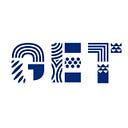Markets, Key Players and Business Models: The Chinese STEM Education Market 101
Last time we had a glimpse of the current situation in the Chinese STEM education market, what we really refer to when we talk about STEM, and the problems that the market is facing. Check out the previous article here.
The current market is like a bowl of mixed pea soup: there are more than 100 companies who provide or ‘claim’ to provide STEM education in China. However, there’s a huge disparity in terms of the qualities of these companies. This week, let’s dig into the market a bit further unrevealing the existing players and their business models.
Where are the Markets?
We could generally cut the cake of the STEM education sector into two big pieces:
- In-school: the direct buyers of the STEM products are K12 school principals and teachers;
- After-school: the direct buyers are parents and K12 students.
The in-school market can again be divided into
- In-class, where the STEM education methodologies are blended into the existing curriculum such as Physics, Chemistry, Maths or Computer classes;
- After-class, in the format of free and optional courses, or school-organised competitions.
On the other hand, the after-schools market includes training facilities/centres for Makers education (such as robot training, robot competitions, and coding boot camps for teens, etc), and educational toys and materials for family-use.
Types of Players
The existing players in Chinese STEM education market can be grouped into four categories based on their backgrounds and products (the names are made up by JMDedu but hopefully you can get the idea):
(1) The Academics: These companies are usually incubated within or endorsed by a prestigious university or a research organisation. Therefore, they can gain the trust of K12 schools more easily. They usually have a higher quality team of teacher training and curriculum design. Example companies could be QC Maker Education (whose recent funding is Pre A of 10 million RMB in 2017) who is based in the Makers Lab of Tsinghua University, or the Shanghai STEM Cloud, bases in East China Normal University.
(2) The Overseas Come-backs: This category includes all the international companies who have entered the Chinese market, and all Chinese companies who started their market overseas but now return to serving the Chinese market. Since the concept of STEM is imported from the U.S. and Europe, the companies in this category usually bring back more advanced, established products and ideologies, and further accelerate the development of STEM education in China. Example companies are Sony Koov, LEGO, CodeMonkey, Makeblock, etc.
(3) The Integrators: These companies usually have a variety of distribution resources and channels to K12 schools, whether it is because of the previous products they were selling or that they are indorsed by a large educational/research institution in the region, for instance, WEIT.
(4) The Normal Ones: Most commercial businesses fall into this category — they don’t have a particular academic or international background but they have the ambition to help student learning by doing, e.g. METAS, Abilix, UBTech, RoboTerra, etc.
The Mainstream Business Models:
These are the three most popular business models in the market, with some companies operating under a hybrid model combining two or all of these:
A. Targeting the ‘in-school and in-class’ market: providing teaching equipment and aggregated classroom/space design solution to K12 schools.
B. Targeting the ‘in-school and after-class’ market: providing curriculum design, teaching equipment, teacher training and competitions to K12 schools.
C. The majority of the current STEM educational companies are targeting consumers directly by establishing after-school training facilities/ centres. For example, RoboRobo, SharkPark, etc.
The STEM education is considered to be a fast-growing market where in 5 years, the K12 in-school market size is estimated to achieve 10.2 billion RMB (around 1.48 billion USD) and the after-school market size, 12 billion RMB (around 1.74 billion USD), according to the 2014–16 China EdTech Report by JMDedu. And it is a market where the international players could have a huge impact and opportunity to participate.
If you are looking to expand your business in China EdTech market, or seeking partners in China, do not hesitate to contact JMDedu and have a chat with our industry experts!
